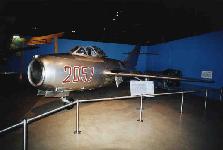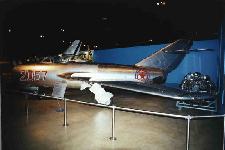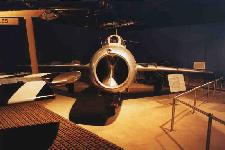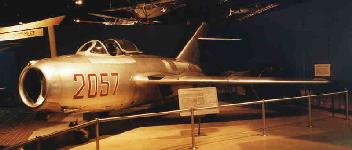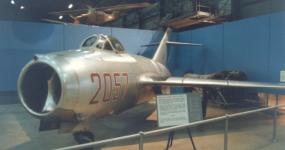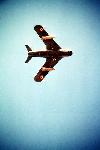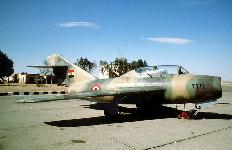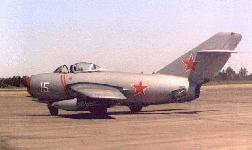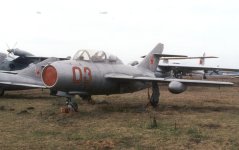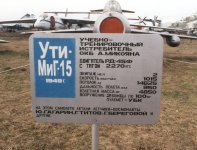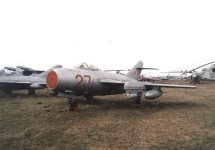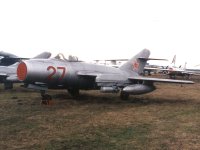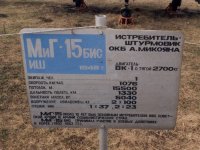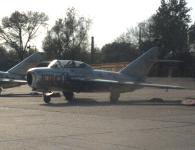




The prototype MiG-15 first flew in December 1947. It began appearing in service in 1949 and by 1952 it had been provided to a number of Communist satellite nations, including North Korea where it was used extensively against United Nations forces. The MiG-15 was deployed against American Air Forces in December of 1950 in Korea. On November 8, 1950, 1st Lt. Russell Brown, flying an F-80, shot down a MiG-15 in the first all-jet dogfight in history. It was apparent, however, that the MiG-15 was superior to any aircraft then in the US inventory.
Initial encounters with American aircraft led to the development of the MiG-15bis (improved). Its VK-1 engine had 1,000 lbs more thrust than the RD-45 engine of the earlier version, and had hydraulic ailerons. Although the MiG-15bis could climb faster and higher than the F-86, poor turning performance and high mach instability limited its dogfight performance. In aerial combat against the F-86, the MiG-15 suffered high losses, but against the B-29 it was very effective and prevented the heavy bombers from operating in daylight
Specifications | |
| Span | 33 ft. 1 1/2 in. |
| Length | 33 ft. 3 5/8 in. |
| Height | 11 ft. 2 in. |
| Weight | 11,270 lbs. max. |
| Armament | Two 23mm cannons and one 37mm cannon, plus rockets or 2,000 lbs. of bombs |
| Engine | VK-1 of 6,000 lbs. thrust (copy of British Rolls-Royce "Nene" engine) |
| Maximum speed | 670 mph. |
| Cruising speed | 525 mph. |
| Range | 500 miles |
| Service Ceiling | 51,000 ft. |
